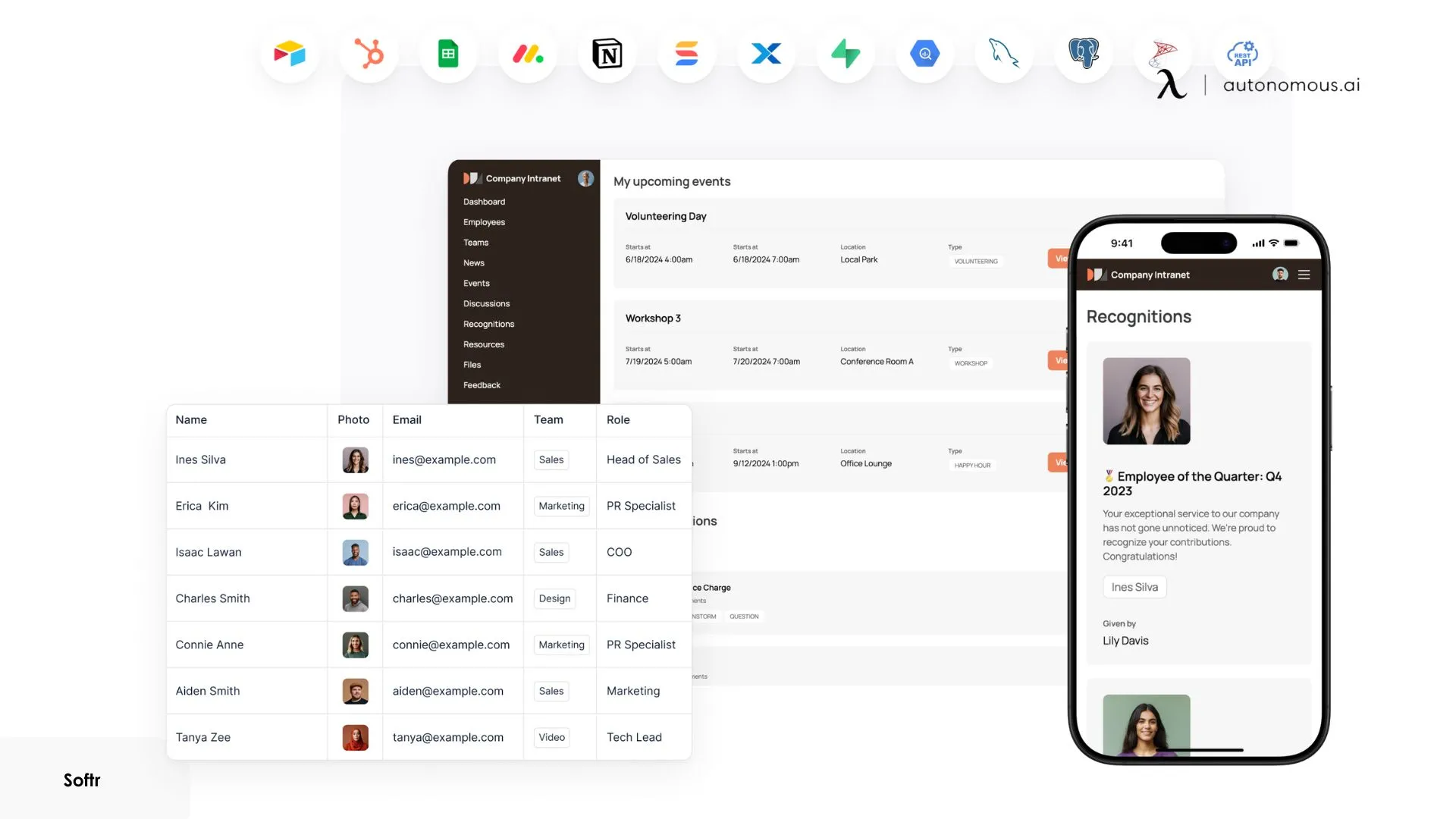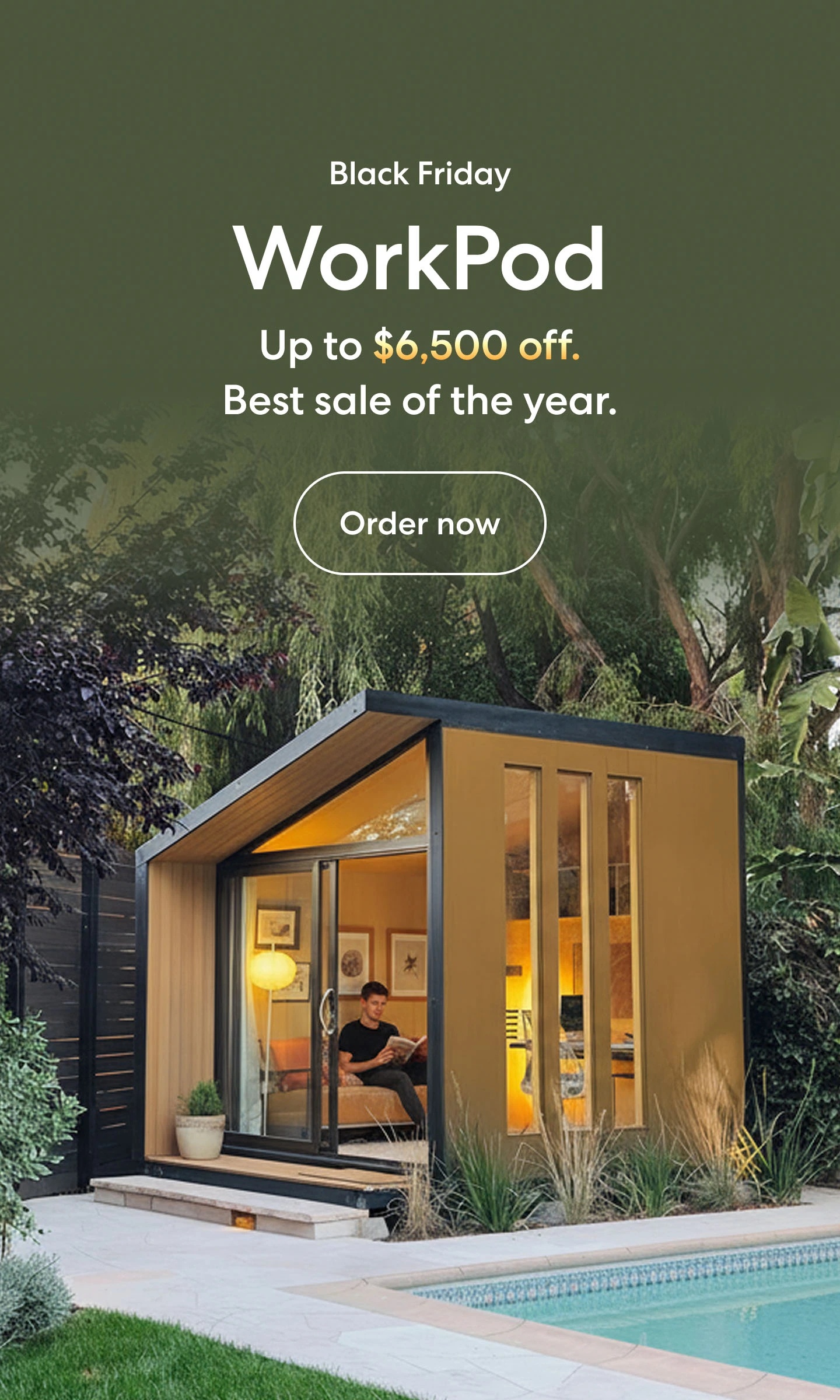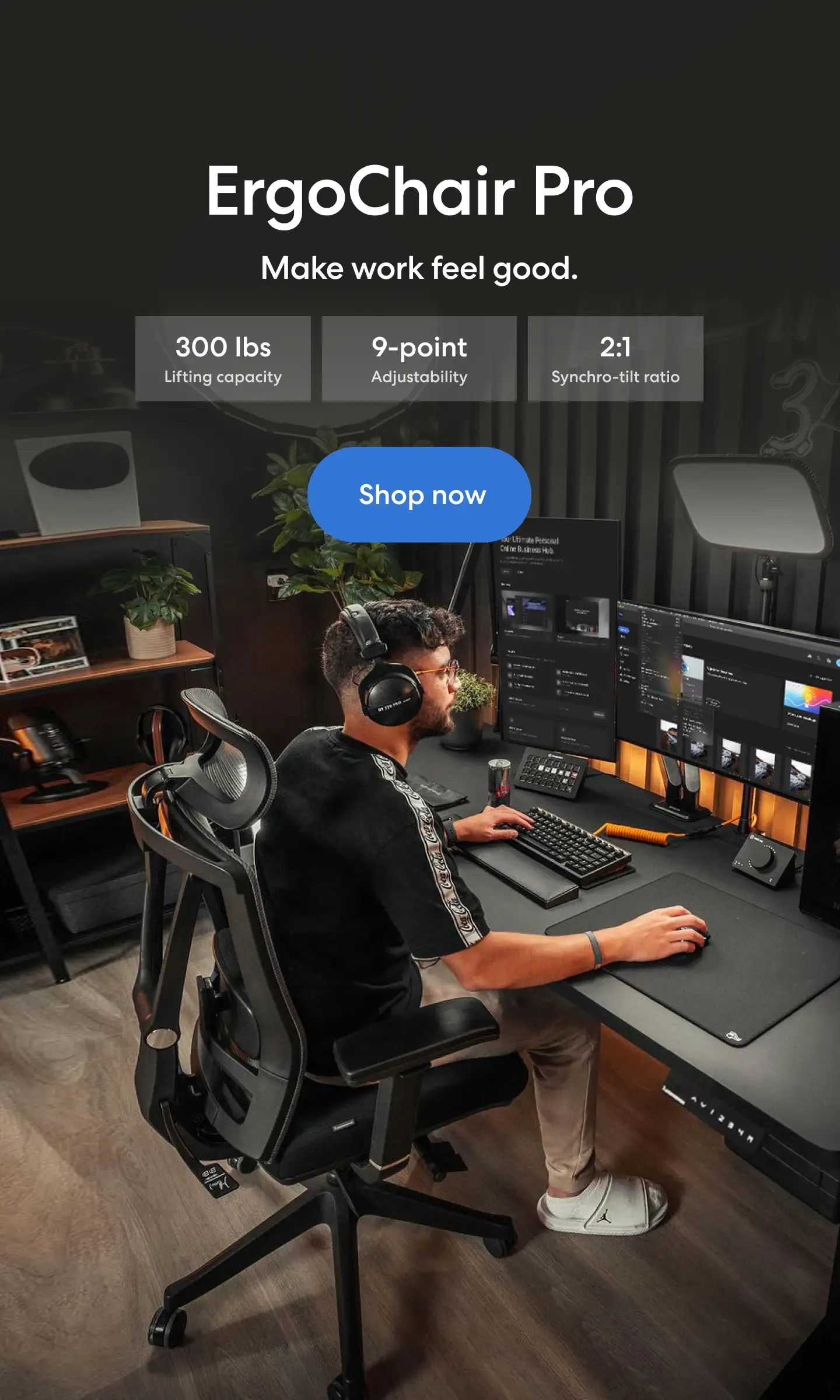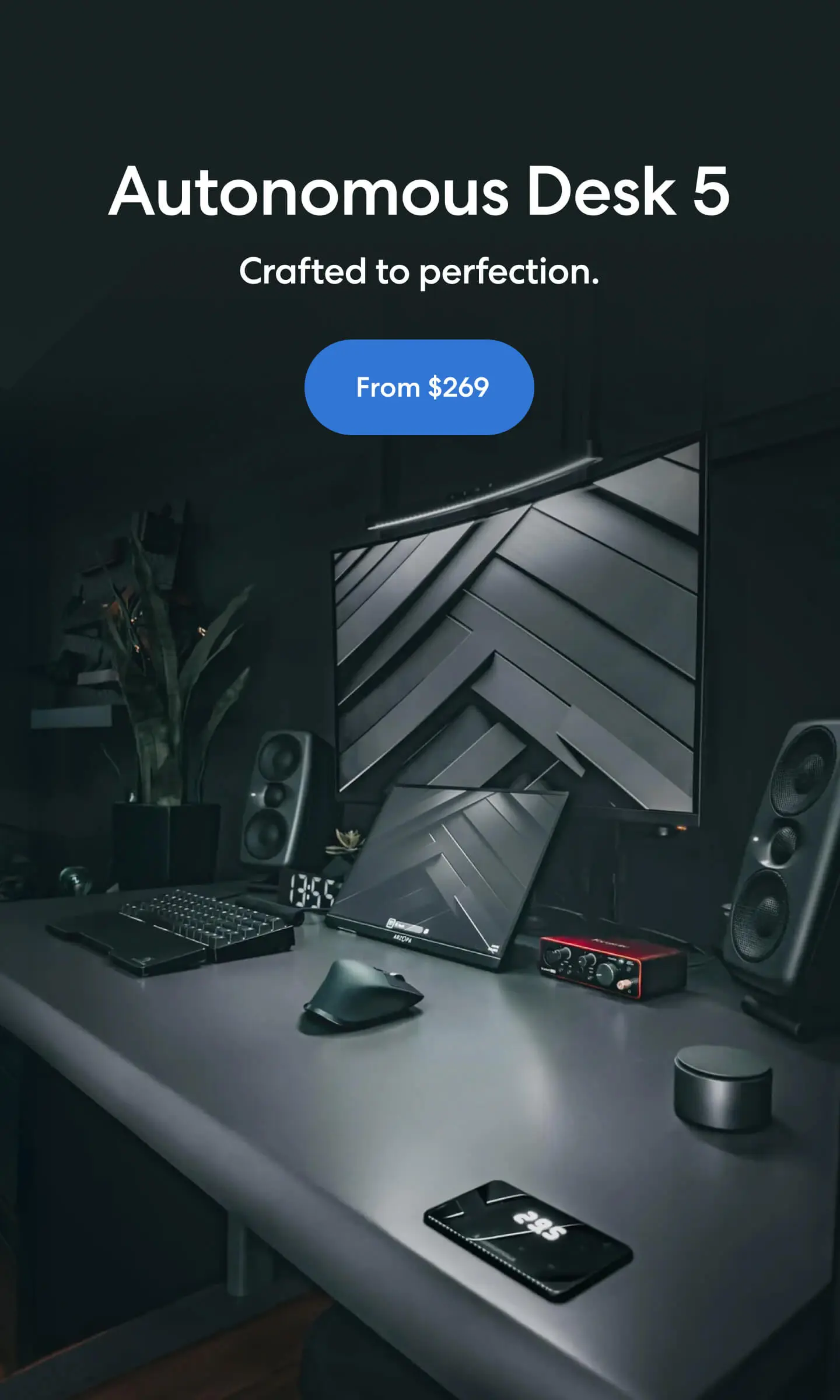
5 Best App Building Software for 2025: No-Code to Pro
Table of Contents
Choosing the best apps building software can feel overwhelming when every platform claims to be fast, flexible, and beginner-friendly. The reality is that not all tools are built the same. Some focus on mobile experiences, others offer phone app building software, and a few support both iOS and Android without coding at all.
This guide breaks down the top options in 2025 so you can pick the right no code app building software for your workflow, skill level, and long-term goals.
How I Picked and Tested the Best App Building Software
Choosing the best app building software in 2025 isn’t as simple as comparing feature lists. The landscape has grown fast, with everything from no code app building software to AI-powered platforms claiming they can publish iOS and Android apps in a few clicks. To cut through the noise, I tested each tool the same way a real user would — building a simple mobile app first, then scaling it into something more complex to see where each platform breaks.
This approach lets me evaluate both beginner-friendly builders (for people searching for the easiest app building software or free mobile app building software) and advanced platforms built for high-performance productivity workflows.
Here’s the exact framework I used to separate the hype from the genuinely great app development software for Android and iOS.
- No-Code & Low-Code Capability
The first thing I looked at was whether non-developers could actually use the platform. True no-code tools should feel like a smooth drag-and-drop experience, not a disguised coding environment. I evaluated:
- Visual editors
- Pre-built templates
- Real-time preview
- Ability to build complete workflows without writing JavaScript or Swift
Platforms that require coding for essential actions, have outdated UI builders, or lack real visual logic quickly reveal their limitations for non-developers and teams seeking Android app development software without coding.
- Ease of Use
Great mobile app building software shouldn’t make you hunt for basic functions:
- How intuitive the onboarding is
- Whether tutorials actually help you build your first screen
- Editor responsiveness on both desktop and browser
- How quickly you can publish a test build
Platforms that took too long to set up or made small actions feel heavy didn’t make the top list of the best mobile app building software.
- Flexibility & Customization
Once the basics passed, I pushed each tool harder. I tried building:
- A native iOS/Android app
- A PWA
- A small eCommerce flow
- A data-driven internal tool
- A multi-step workflow with conditional logic
This is where many beginner-focused tools fall apart. The best app building software should scale from a simple prototype to something functional enough for real users.

- AI Features
Many 2025 platforms integrate AI, similar to how best AI gadgets are reshaping workspaces, to generate screens, starter layouts, app logic, and workflow automation. These features help reduce development time and support faster iteration without forcing users into rigid templates. While testing, I paid attention to:
- Prompt-to-app generation
- Automated UI layouts
- AI-assisted logic building
- Smart recommendations for workflows and data models
Some tools delivered genuinely helpful AI, while others simply added buzzwords.
- Integrations & Backend Logic
Platforms with broad integration ecosystems allow users to create more advanced applications with consistent backend operations. I checked how easily each platform connected with:
- APIs
- Airtable
- Supabase
- MongoDB
- Firebase
- Webhooks
- Automation workflows
The best app building software should make backend logic feel straightforward, not overwhelming.
- Pricing Transparency
True value shows up over time, not just at signup. High-quality builders provide honest pricing structures, sustainable free tiers, and predictable upgrade paths. Hidden publishing fees, unexpected usage charges, or strict caps on core features often turn “free mobile app building software” into a costly commitment.
Best App Building Software In 2025
The list of the best app building software below highlights the tools that offered the strongest mix of usability, features, and long-term stability during testing. Each platform serves a different type of creator, so the rankings focus on what they do best rather than a one-size-fits-all winner. Whether you're building solo or with a team, having the right gadgets for programmers can make your development setup more efficient.
- Side-by-Side Comparison:
Tool | Best For | Starting Price | Free Plan | Native Support | Difficulty Level | Export Options |
Adalo | Beginners building mobile apps | ~$36/mo | Yes | iOS, Android, Web | Easy | No full source export |
Bubble | Complex web apps & SaaS | ~$29/mo | Yes | Web + PWA | Moderate | No native source export |
Glide | Business apps & internal tools | ~$29/mo | Yes | Web + limited mobile | Very Easy | No full code export |
AppSheet | Data-driven mobile apps | Free for personal use | Yes | iOS, Android, Web | Easy | No direct source export |
Softr | Simple client portals & web apps | ~$24/mo | Yes | Web | Very Easy | No code export |
1. Adalo — Best Overall For Beginners
Adalo sits at the top of the list mainly because it offers one of the smoother learning curves for people who are new to app creation. It’s not perfect, and it won’t replace heavy-duty development tools, but for anyone exploring no code app building software, it provides a straightforward way to build real mobile apps without getting overwhelmed.
The editor feels intuitive — screens, components, and logic connect visually, which helps beginners understand how their app actually works. It’s one of the reasons Adalo shows up frequently when people look for the easiest app building software or free mobile app building software to test ideas before investing in something more advanced. It’s approachable, but still capable enough for simple marketplaces, directories, and appointment-style apps.
Key Features:
- Visual drag-and-drop builder with simple logic tools
- Native publishing for both Android and iOS
- Built-in database suitable for small to mid-sized apps
- Templates that reduce setup time
- Light AI tools for layout and flow suggestions
Pricing: Starts around $36/month, with a free plan for experimenting or building basic prototypes.
Pros:
- Beginner-friendly without feeling too limited
- Offers real native app publishing, not just browser-based apps
- Easy to understand for people with zero coding background
- Templates help reduce early friction
Cons:
- Not ideal for apps that need very complex logic or large databases
- No full source code export, which may be a dealbreaker for long-term scaling
- Performance can vary if the app becomes too large
Ideal User:
Adalo fits beginners, solo creators, and small teams who want mobile app building software that doesn’t bury them in technical setup. It’s not built for enterprise-level apps, but it works well for practical, lightweight projects where speed and simplicity matter more than deep customization.
For developers working on multiple apps, a well-organized programmer desk setup can keep your workflow efficient across projects.

2. Bubble — Best for Complex Web Apps & SaaS-Style Tools
Bubble is one of the most capable platforms on this list, especially for people who want to build something more sophisticated than a simple mobile layout. It’s not the easiest tool to learn, but when the goal is to create full web-based software, Bubble consistently holds its own.
It functions more like a full development environment wrapped in a visual editor. Workflows, data structures, and responsive layouts offer a level of control that most no code app building software platforms don’t attempt. This makes Bubble a strong fit for users who need features usually associated with traditional coding, minus the code.
Bubble isn’t a native-first tool, so creators seeking phone app building software or mobile app building software may find it limiting. While it can generate PWAs and mobile-friendly designs, it doesn’t produce real native iOS or Android apps out of the box.
Key Features:
- Highly customizable visual editor for web apps
- Database management and workflow automation
- Plugin marketplace for integrations and advanced functions
- PWA capabilities for mobile-friendly access
- AI-assisted workflow generation
Pricing: Plans start around $29/month, with a free tier suitable for learning and basic prototypes.
Pros:
- Exceptional flexibility for complex web apps
- Strong backend logic and database tools
- Large community with many tutorials and templates
- Suitable for SaaS, marketplaces, and multi-user platforms
Cons:
- Steeper learning curve compared to other platforms
- Not ideal for fully native mobile apps
- App performance requires thoughtful optimization
- No direct source code export
Ideal User:
Bubble works best for founders, product teams, and technical hobbyists who want to build robust web-based software without writing code, often requiring deep work sessions to master the platform's complexity. It’s less suited for people who simply want the easiest app building software, but excellent for users who value customization and need something more powerful than basic drag-and-drop mobile builders.

3. Glide — Best for Business Apps & Internal Tools
Glide takes a very different approach compared to traditional drag-and-drop app builders. Instead of starting with blank screens, Glide builds around data — usually Google Sheets, Airtable, or its own built-in database. It’s not the most flexible platform on the list, but it’s one of the fastest ways to turn structured data into a working app.
Because of its data-first design, Glide often appeals to teams that need practical tools rather than flashy, fully custom mobile apps. It works well for operations, admin panels, project trackers, inventory management, or lightweight client portals, essentially functioning as one of the best productivity apps for streamlining internal workflows.
Key Features:
- Data-first builder using Google Sheets, Airtable, or Glide Tables
- Clean, modern components for business-style apps
- Built-in actions and logic for workflows
- Easy sharing through URLs or installable PWAs
- AI tools for organizing and enhancing data
Pricing: Plans start around $29/month, with a free plan for early experimentation.
Pros:
- Very beginner-friendly, even for non-technical teams
- Excellent for internal tools and business workflows
- Apps load quickly and feel polished without much design work
- Minimal maintenance once the data structure is set
Cons:
- Not suited for highly custom or visually unique apps
- No native publishing for iOS/Android
- Limited flexibility for complex multi-layer logic
- Large datasets may require performance tuning
Ideal User:
Glide works best for teams building internal tools, small business systems, or data-driven workflows. It’s not built for ambitious consumer apps, but for operational tools, it’s hard to beat the speed and simplicity.

4. AppSheet — Best for Data-Driven Mobile Apps
AppSheet, now part of Google Workspace, stands out for users who want to build mobile apps directly from spreadsheets or structured data without writing code. When the goal is to convert existing data into a working mobile tool, AppSheet is usually one of the simplest paths to get there.
Unlike visual drag-and-drop builders, AppSheet generates interfaces automatically based on the data structure you provide. This approach feels very different from traditional mobile app building software, and whether that’s a strength or limitation depends on the project.
AI features are present, mostly around generating app structures and simplifying logic creation. They’re helpful, but still grounded enough that you don’t get unrealistic “build the entire app with one sentence” experiences.
Key Features:
- Builds apps from Google Sheets, Excel, and SQL databases
- Native mobile support for iOS and Android
- Strong automation tools for notifications and workflows
- Solid offline support for field or on-site workers
- AI-assisted logic and structure generation
Pricing: AppSheet offers a free tier for personal projects, with paid plans for business use and advanced features.
Pros:
- Excellent for data-heavy and operational apps
- Strong fit for businesses already using Google Workspace
- Reliable mobile deployment with offline functionality
- Automations are simple to configure without scripts
Cons:
- Limited design flexibility compared to visual builders
- UI can feel utilitarian rather than polished
- More suited for business/internal use than consumer apps
- Learning logic rules can take time despite the no-code label
Ideal User:
AppSheet is ideal for teams that need practical, data-driven mobile tools without investing in full development. For creators searching for the best free app building software or tools that turn spreadsheets into functional apps quickly, AppSheet offers a dependable, realistic option with minimal setup.
If you're building apps regularly, optimizing your programmer room setup can improve focus and reduce fatigue during longer development sessions.

5. Softr — Best for Simple Web Apps, Client Portals & Lightweight Tools
Softr is one of the most approachable platforms for turning data into functional web apps without writing code. It’s built around Airtable and Google Sheets, which makes it a natural fit for creators who already organize their information in spreadsheets and want a clean, structured way to share it with clients or teams.
While it isn’t designed for advanced mobile apps or highly customized interfaces, Softr handles simple software-style projects reliably and with very little setup time. The platform focuses on pre-built blocks rather than freeform design. This approach removes a lot of decision-making, which helps beginners move fast but also limits creativity for users who want pixel-level control.
For many real use cases, this tradeoff is more of a convenience than a constraint. It behaves like practical no code app building software for everyday business needs rather than a full “build anything” environment.
Key Features:
- Block-based builder with clean, modern templates
- Tight integration with Airtable and Google Sheets
- Built-in membership, authentication, and permissions
- Simple automation and conditional visibility
- AI tools for fast layout and page creation
Pricing: Starts at around $24/month, with a free plan ideal for experiments, personal tools, or early-stage projects.
Pros:
- Extremely beginner-friendly
- Great for client portals, directories, and simple business apps
- Polished templates reduce design work
- Clear learning path for non-technical users
Cons:
- Not suited for complex or highly customized apps
- No native Android/iOS publishing
- Data syncing speed depends heavily on Airtable or Sheets
- Limited backend logic compared to stronger platforms
Ideal User:
Softr is best for freelancers, small teams, and business owners who want a quick way to turn existing data into functional software without needing technical expertise.

Hidden Limitations Most Reviews Don’t Tell You
Most comparison articles highlight features and pricing, but the real differences between app builders only show up once you start building, scaling, and maintaining an app over time. These limitations aren’t dealbreakers, every platform has them, but understanding them early helps set realistic expectations and prevents costly surprises.
- Vendor Lock-In Is More Common Than You Think
A large portion of no code app building software keeps your project inside its ecosystem. If the platform doesn’t allow full source code export (which most don’t), you’re tied to its infrastructure, pricing updates, and technical limitations.
Only a few builders, like FlutterFlow, give real ownership through exportable code. For long-term or enterprise apps, this limitation matters much more than it seems at the start.
- Native App Publishing Isn’t Always Simple
Many tools advertise iOS/Android publishing, but the real experience varies.
For example:
- Some rely on wrappers or third-party services
- Some only support web apps or PWAs
- Some require manual app store setup that can be confusing for beginners
Users searching for mobile app building software or ios app building software often discover that “publish to mobile” isn’t always a one-click process — and app store reviews can slow things down further.
Scaling Costs Increase Faster Than Expected
Free plans are great for testing ideas, but the moment you add real users, storage, or automation, pricing can spike.
Common cost jumps include:
- Database row limits
- Workflow/automation caps
- API request ceilings
- Branded domain fees
A platform that looks like the best free app building software can quickly become expensive when your app grows.
- Templates Can Become a Ceiling
Many builders rely heavily on templates to speed up development. While helpful early on, templates often box you into fixed layouts and specific logic paths.
You may eventually outgrow them, especially if you’re building something more than a simple portal or tracker.
- Backend & Database Limits Show Up as Apps Scale
No-code databases are great for small projects, but they often hit ceilings quickly.
Typical constraints:
- 5K–10K row limits before performance drops
- Slow queries when filtering or joining data
- Limited relational data modeling
- Constraints on background processing
This becomes a major issue for internal tools or business apps built on larger datasets.
- App Store Rejections Are More Frequent Than Expected
Even if your build is technically correct, Apple and Google review guidelines still apply.
- Frequent rejection reasons:
- Too simple or template-like
- Missing platform-specific features
- Poor user experience on native devices
- Inconsistent navigation or structure
For users expecting “one-click publishing,” this can be surprising.

FAQs
What software is best for building an app?
Yes. Modern no-code platforms let you build apps using visual editors, templates, and drag-and-drop tools instead of programming languages. These tools are suitable for beginners and small teams who want to create functional mobile or web apps quickly.
Which app builder is best for beginners?
If you're just starting out and want the easiest way into creating an app, Adalo is one of the most beginner-friendly choices. It offers drag-and-drop design, lots of templates, and publishing support for iOS, Android and the web.
What is the best app building software for businesses?
Zoho Creator, Bubble, and AppSheet work well for business tools because they support workflows, automation, and data integrations. They’re suitable for internal systems, dashboards, and enterprise-grade processes.
What app building software can publish to both iOS and Android?
FlutterFlow, Adalo, and AppSheet support publishing to both platforms. Each tool handles the process differently, but all provide a path to native mobile deployment.
Can I build an app for free?
Yes, most app-building platforms provide free tiers that allow you to experiment and build basic apps without paying.
What is the cheapest way to build a mobile app?
Using no-code mobile builders is typically the most affordable option. Tools like Adalo, FlutterFlow, and AppSheet allow you to create iOS and Android apps without hiring developers, reducing overall cost significantly.
Is AI app building reliable?
AI speeds up layout creation and workflow setup, but it doesn’t fully replace the need to understand your app’s structure. It’s helpful for prototyping and improving efficiency, but human input is still needed for logic, design, and refinement.

Final Thoughts
Choosing the best app building software comes down to how you work, what you’re building, and how far you plan to take it. No-code and low-code tools now cover almost every type of project — from simple mobile apps to full business workflows — but each platform has strengths, limits, and ideal users. The key is matching your app’s complexity, your design expectations, and your long-term plans to the tool that fits those needs without unnecessary friction. Tools like Windsurf are also changing how developers approach AI-assisted coding workflows during these extended work sessions.
With realistic expectations and a clear understanding of your goals, you can confidently choose an app builder that supports your idea from first draft to final launch — whether you're building a small project for yourself or a full mobile experience for thousands of users. And since app development often means long hours at your desk, investing in the best chairs for programmers and deciding between curved vs. flat monitors for programming can make those sessions more comfortable and sustainable.
Spread the word
.svg)



(1).webp)



